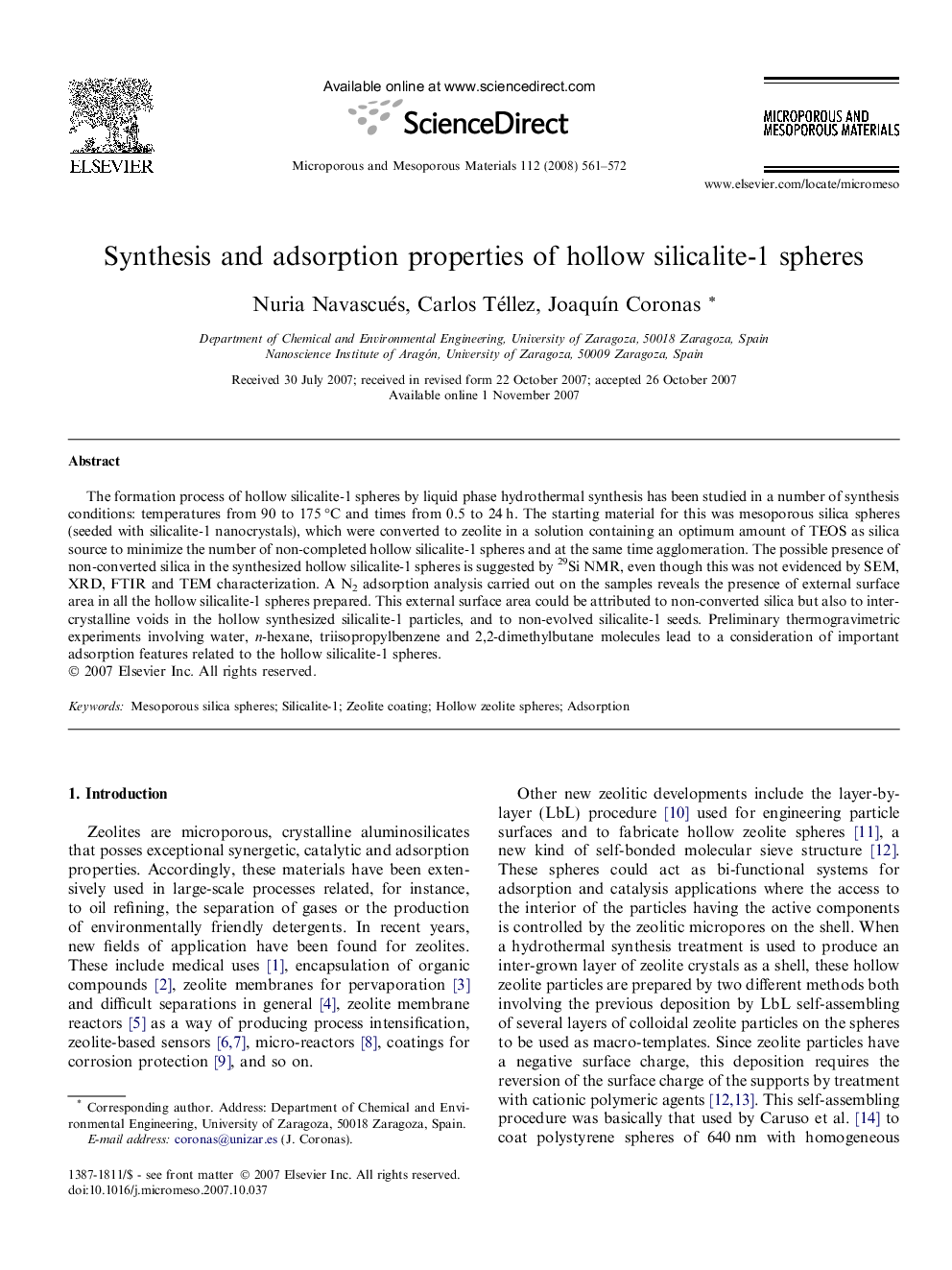| Article ID | Journal | Published Year | Pages | File Type |
|---|---|---|---|---|
| 76126 | Microporous and Mesoporous Materials | 2008 | 12 Pages |
The formation process of hollow silicalite-1 spheres by liquid phase hydrothermal synthesis has been studied in a number of synthesis conditions: temperatures from 90 to 175 °C and times from 0.5 to 24 h. The starting material for this was mesoporous silica spheres (seeded with silicalite-1 nanocrystals), which were converted to zeolite in a solution containing an optimum amount of TEOS as silica source to minimize the number of non-completed hollow silicalite-1 spheres and at the same time agglomeration. The possible presence of non-converted silica in the synthesized hollow silicalite-1 spheres is suggested by 29Si NMR, even though this was not evidenced by SEM, XRD, FTIR and TEM characterization. A N2 adsorption analysis carried out on the samples reveals the presence of external surface area in all the hollow silicalite-1 spheres prepared. This external surface area could be attributed to non-converted silica but also to intercrystalline voids in the hollow synthesized silicalite-1 particles, and to non-evolved silicalite-1 seeds. Preliminary thermogravimetric experiments involving water, n-hexane, triisopropylbenzene and 2,2-dimethylbutane molecules lead to a consideration of important adsorption features related to the hollow silicalite-1 spheres.
